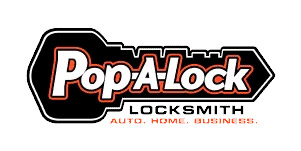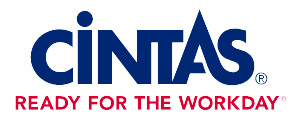How to Maximize Fuel Efficiency in Your Work Van or Fleet

Fuel expenses remain a significant challenge for fleet operators and trades professionals. With national average prices at approximately $3.16 per gallon for regular gasoline and $3.52 per gallon for diesel as of July 2025, optimizing consumption is essential for maintaining profitability. If you’re wondering how to be fuel efficient with your work van or fleet, start with these proven strategies: focus on driver training, reduce idling, lighten loads, maintain tires properly, minimize aerodynamic drag, optimize routes, perform regular maintenance, manage cabin climate effectively, and provide drivers with clear guidelines. This guide outlines practical, data-backed steps to implement these measures, drawing from sources like the U.S. Department of Energy (DOE) and the North American Council for Freight Efficiency (NACFE), where 14 fleets saved $512 million in 2023 through efficiency improvements.
Why Prioritize Fuel Efficiency in Your Operations
For trades such as HVAC, electrical, plumbing, and construction, fuel costs directly impact your bottom line and operational sustainability. Efficient practices not only reduce expenses but also enhance vehicle longevity, lower emissions, and improve overall productivity. By adopting these methods, fleets can achieve 10-20% savings, allowing you to reinvest in your business while maintaining a professional edge.
Step 1: Train Drivers for Efficient Habits
Aggressive driving, including speeding and abrupt braking, can reduce fuel economy by 15-30% on highways and 10-40% in urban traffic, according to the DOE. Additionally, exceeding 50 mph by 5 mph equates to an extra $0.20 per gallon in effective fuel costs.
Implementation tips:
- Deploy dashboard feedback devices to monitor and improve habits, yielding 3-10% efficiency gains.
- Maintain speed limits and use telematics for compliance.
- Incentivize smooth driving through rewards, fostering long-term behavioral changes.
Step 2: Eliminate Unnecessary Idling
Idling consumes about 0.2-0.5 gallons of fuel per hour in light-duty vehicles, per DOE estimates, leading to substantial waste during job site stops.
Implementation tips:
- Install cargo partitions to improve climate control in the cab area.
- Equip vans with 12V fans or roof vents, such as Upfit Supply’s VanFan, for comfort without engine operation.
- Enforce a policy to shut down engines after five minutes, unless required for safety or power take-off.
Step 3: Reduce Vehicle Weight
Every additional 100 pounds decreases fuel efficiency by 1-2%, as noted by the DOE, with heavier upfits exacerbating the issue in work vans.
Implementation tips:
- Transition to lightweight aluminum or composite shelving and partitions available from Upfit Supply.
- Adopt modular storage systems to carry only essential tools, adapting to varying job needs.
Step 4: Maintain Optimal Tire Conditions
Proper tire inflation can improve fuel economy by up to 3%, while a 1 psi drop across all tires reduces it by about 0.3%. Low rolling resistance (LRR) tires offer an additional 2-5% savings, per EPA data.
Implementation tips:
- Schedule monthly pressure checks or install tire pressure monitoring systems (TPMS).
- Select EPA SmartWay-verified LRR tires during replacements.
- Perform wheel alignments post-exposure to rough conditions to prevent drag and extend tire life.
Step 5: Minimize Aerodynamic Resistance
At highway speeds, aerodynamic drag accounts for up to 65% of energy use, and items like empty roof racks can cut efficiency by 6-25%, according to DOE research.
Implementation tips:
- Remove non-essential roof-mounted equipment when not in use.
- Choose low-profile ladder racks or aerodynamic fairings from Upfit Supply.
- Position necessary cargo low and flush to the vehicle body to reduce wind resistance.
Step 6: Optimize Routing with Technology
Inefficient routes contribute to excess mileage and idling, but telematics can deliver 10-15% fuel savings by streamlining operations, as reported by industry studies.
Implementation tips:
- Implement idle alerts for durations exceeding five minutes.
- Assign jobs to the nearest available technician to minimize travel.
- Analyze post-trip reports to identify and address inefficiencies.
Step 7: Commit to Regular Vehicle Maintenance
An out-of-tune engine can lower fuel economy by 4%, with severe issues like faulty oxygen sensors causing up to 40% losses, per DOE guidelines.
Implementation tips:
- Adhere to schedules for oil changes, filter replacements, spark plugs, and fluid checks.
- Address check-engine lights promptly to avoid compounded fuel waste.
- Maintain a maintenance log to ensure consistent performance and prevent costly downtime.
Step 8: Efficiently Manage Cabin Climate
Conditioning or heating the entire vehicle unnecessarily increases fuel use, particularly in cargo areas.
Implementation tips:
- Utilize composite partitions from Upfit Supply to isolate the cab.
- Incorporate insulated door and floor liners to stabilize temperatures and lessen HVAC demands.
- Opt for perforated partitions where airflow is beneficial without full-vehicle conditioning.
Step 9: Equip Drivers with a Fuel Efficiency Checklist
Empower your team with straightforward tools to reinforce best practices.
Key checklist items:
- Remove unused roof accessories to cut drag.
- Avoid idling, as it wastes 0.2-0.5 gallons per hour.
- Maintain speed limits.
- Conduct weekly tire pressure verifications.
- Eliminate excess weight for better MPG.
- Leverage feedback tools to achieve efficiency targets.
How Upfit Supply Supports Your Efficiency Goals
At Upfit Supply, we specialize in solutions designed for trades professionals, including lightweight shelving to reduce weight, aerodynamic racks to combat drag, organized storage to prevent unnecessary trips, and ventilation options to curb idling. Our products are engineered to enhance durability, professionalism, and cost savings.
Prepared to enhance your operations? Explore Upfit Supply’s range of van upfits or contact our experts for tailored recommendations that align with your fleet’s needs.
Shop Other Work Van Equipment by Vehicle Type
Are you looking to find cargo van accessories tailored to your specific work vehicle? Shop by vehicle type to get the best fit for your van:
- Chevrolet Express
- Ford Transit
- Ford Transit Connect
- GMC Savana
- Mercedes Sprinter
- Mercedes Metris
- Nissan NV
- RAM ProMaster
- RAM ProMaster City
Why Choose Upfit Supply?
Upfit Supply offers top-quality products from trusted brands, fast shipping, and expert support.
Ready to upgrade? Shop the best cargo van accessories today.
Want to check out all of our install, unboxing, and product review videos? Check out our YouTube channel here.




